I know for certain that spring is here when I get a phone call about a swarm of honey bees! You may recall I am the “official” beekeeper at the Greensboro Science Center, where I take care of two hives. I’ve not had much opportunity to recover a swarm since moving to N.C., but this week I had my chance! It’s funny how things work!
Earlier this week I received a somewhat frantic call from one of my contacts at the science center. She said, “Hi Linda, we have a swarm!”. I could almost hear her blood pumping and my own began to race through my veins. I asked for the info I needed to set up a recovery, where are they, how big is the swarm and are you prepared for me to set up a third hive? Turns out they were on a perimeter fence, away from the visitors, the swarm was about the size of two footballs, and she was more than happy for me to set up another hive!
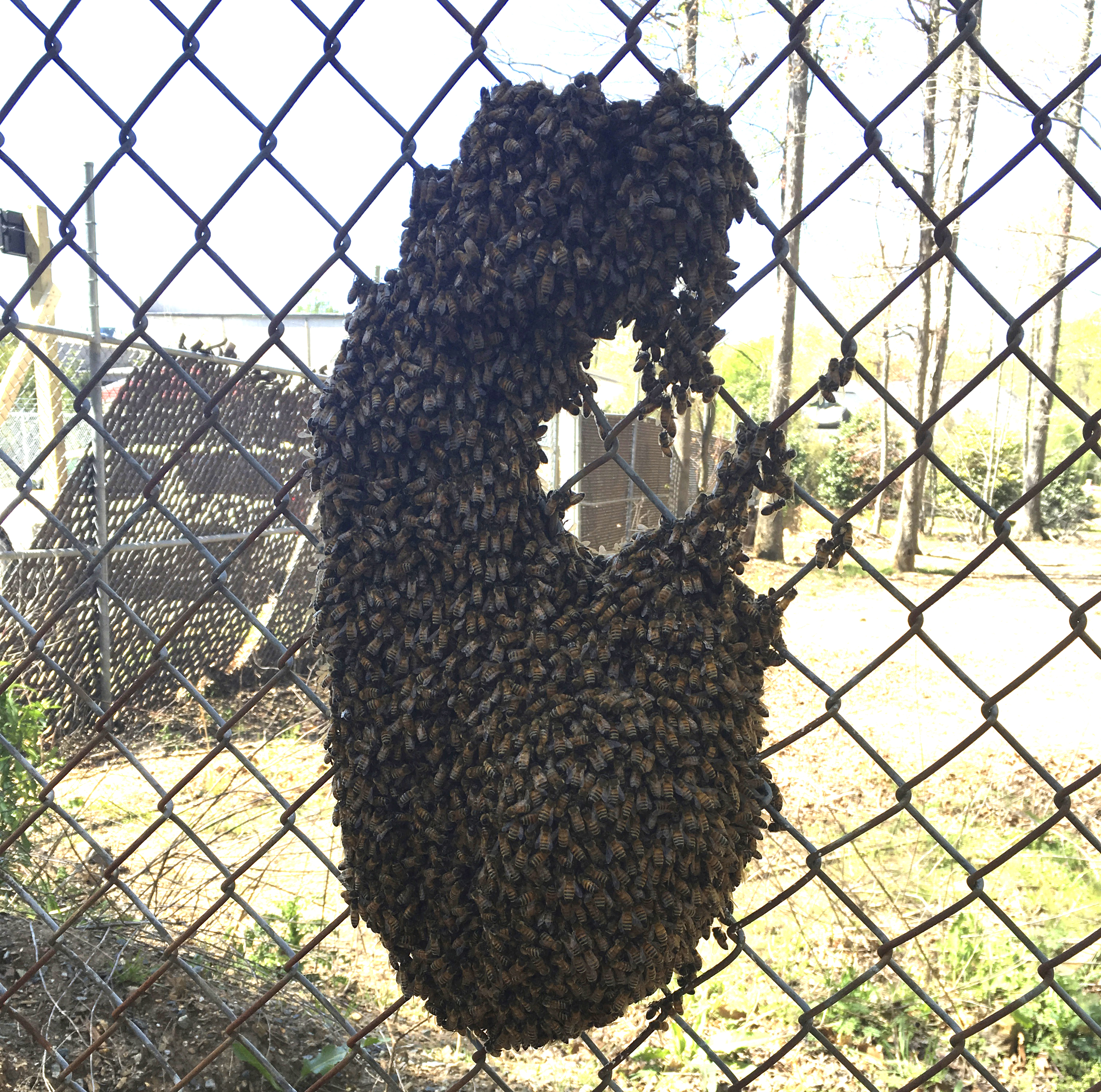
I’ve never removed bees off of a cyclone fence before and the first hurdle I needed to cross was how to keep from knocking half of them onto the ground since there are so many open holes in the fence. I recruited Chandra, the horticulturist at the science center to help me. She donned a complete bee suit for protection, took a few deep breaths and jumped right in! We both had one purpose – to save the bees!
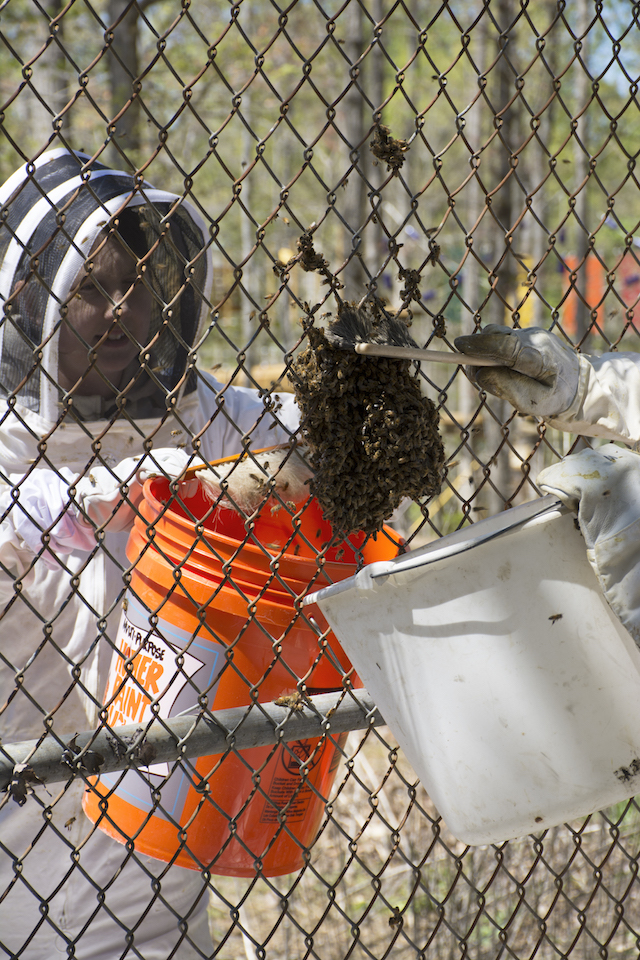
Brushing the last few hundred bees into our buckets simultaneously kept us from knocking them to the ground.
We each had a bucket and a brush. First I showed her how to gently brush them into the bucket on her side. Then I took that bucket full and poured them into the recovery box. Next I brushed on the other side while she kept her bucket positioned under the swarm, ready to catch any who might fall off on her side. Team work, just like the bees. When I poured the bees from my side into the box I decided it was time to check for the queen before there were even more bees to search through. Amazingly I immediately saw her.
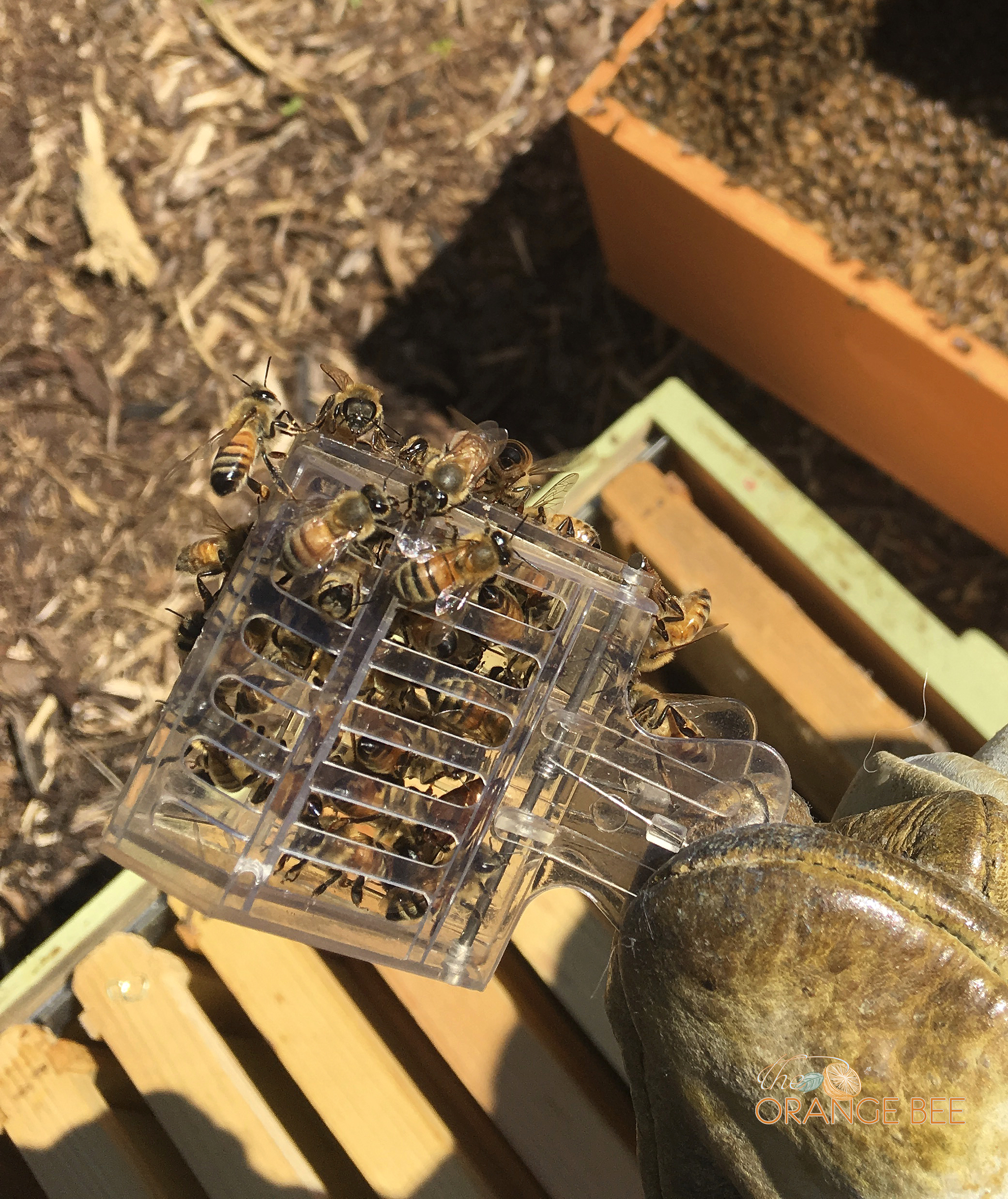
Can you spot her? She is near the bottom left corner. Her body is amber in color and her back end is long and pointed. No stripes on the queen.
I felt extremely lucky that day for two reasons. First I located the queen right away and was able to catch her in the “queen catcher” and secondly temperatures were predicted to plunge to 28*F that night and this colony would have frozen to death – literally! That would not happen on my watch!
The queen catcher has openings just big enough for the worker bees to come and go but just small enough that the queen cannot get out! After “catching” her I laid her in the recovery box and most of the bees follow all on their own. It is a remarkable process to watch.
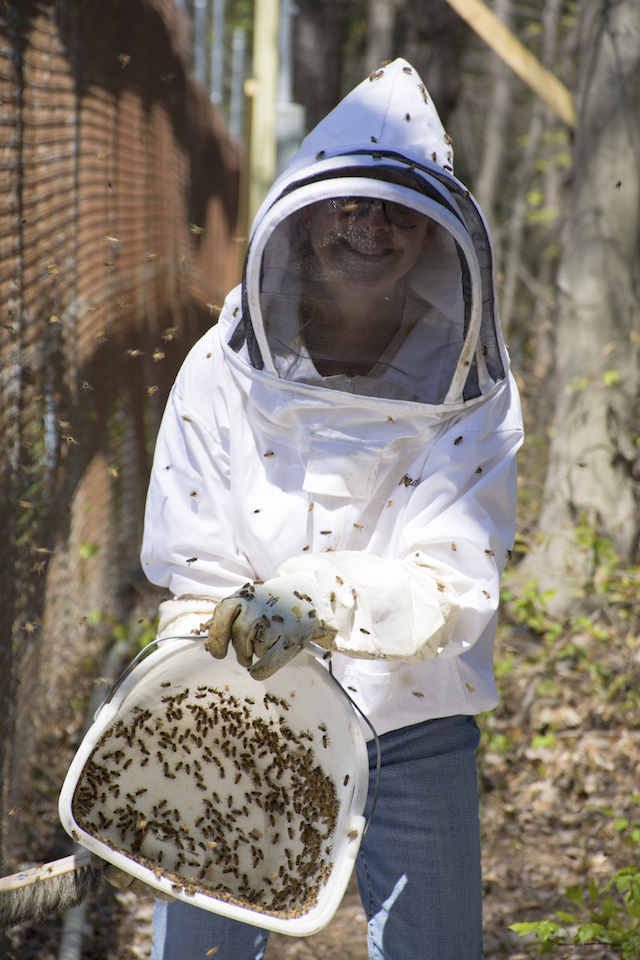
Another bucket of bees brushed from the fence into a bucket.
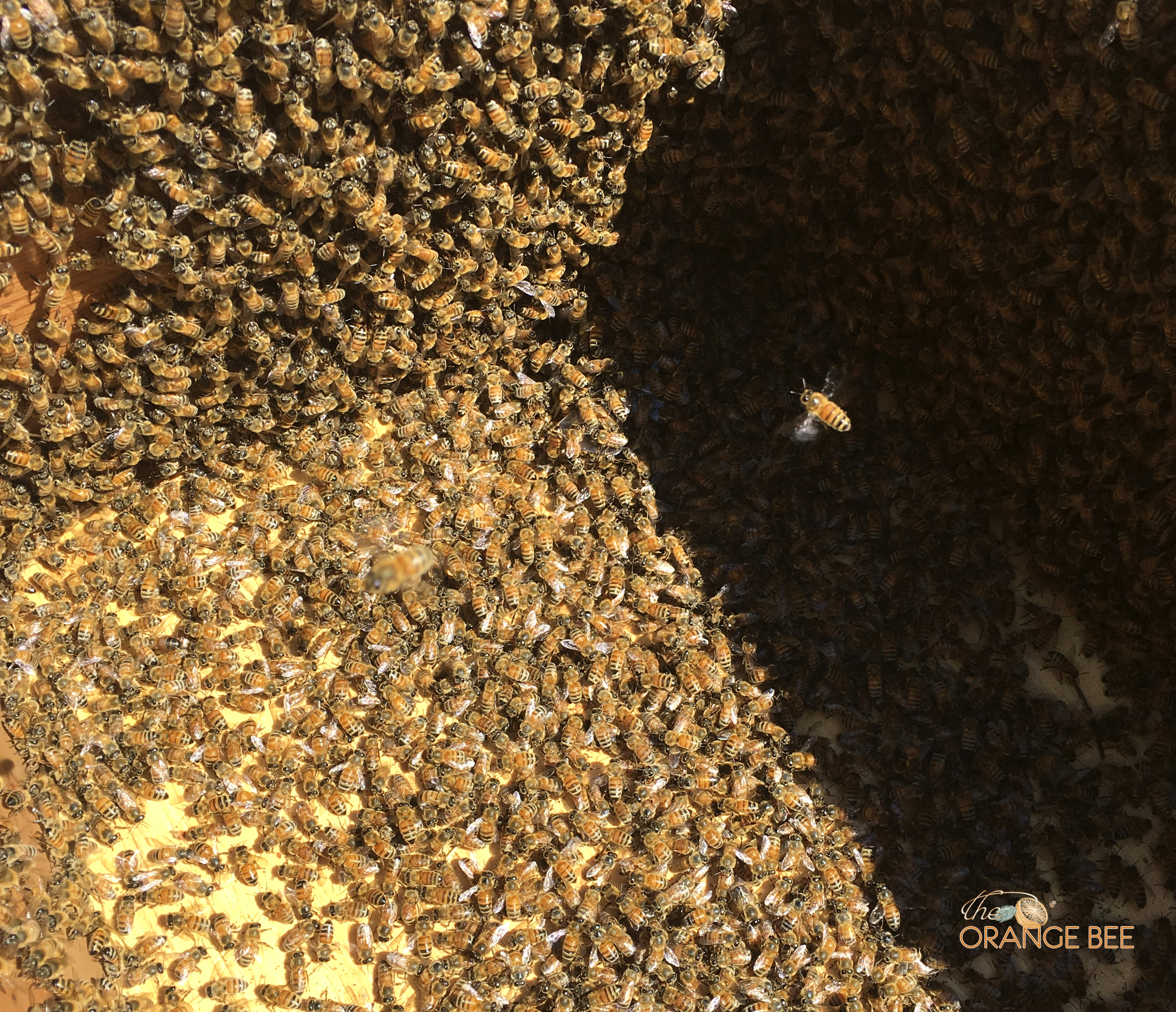
Not visible as it is covered in bees, is the queen catcher with Queen April safe and sound inside. Here’s a hint – it is in the top right corner where there are many bees gathered on top of her cage.
I love the little worker making a beeline into the recovery hive in the photo above. After the majority of the bees have gone in I place a lid on top of the recovery box and allow the remaining few to crawl into the front entrance. Sometimes it takes a little coaxing but I’m patient and try to get all of them to go inside before I close off all openings. Bees are not aggressive when in “swarm” mode. In fact – I think they know when they go into the recovery hive that they’ve just been offered a new home!
Next we transported the recovery hive to the apiary on the science center grounds. After putting a new hive body and one super in place I lay the queen in her catcher inside and then proceed to pour or dump her colony into the hive with her.
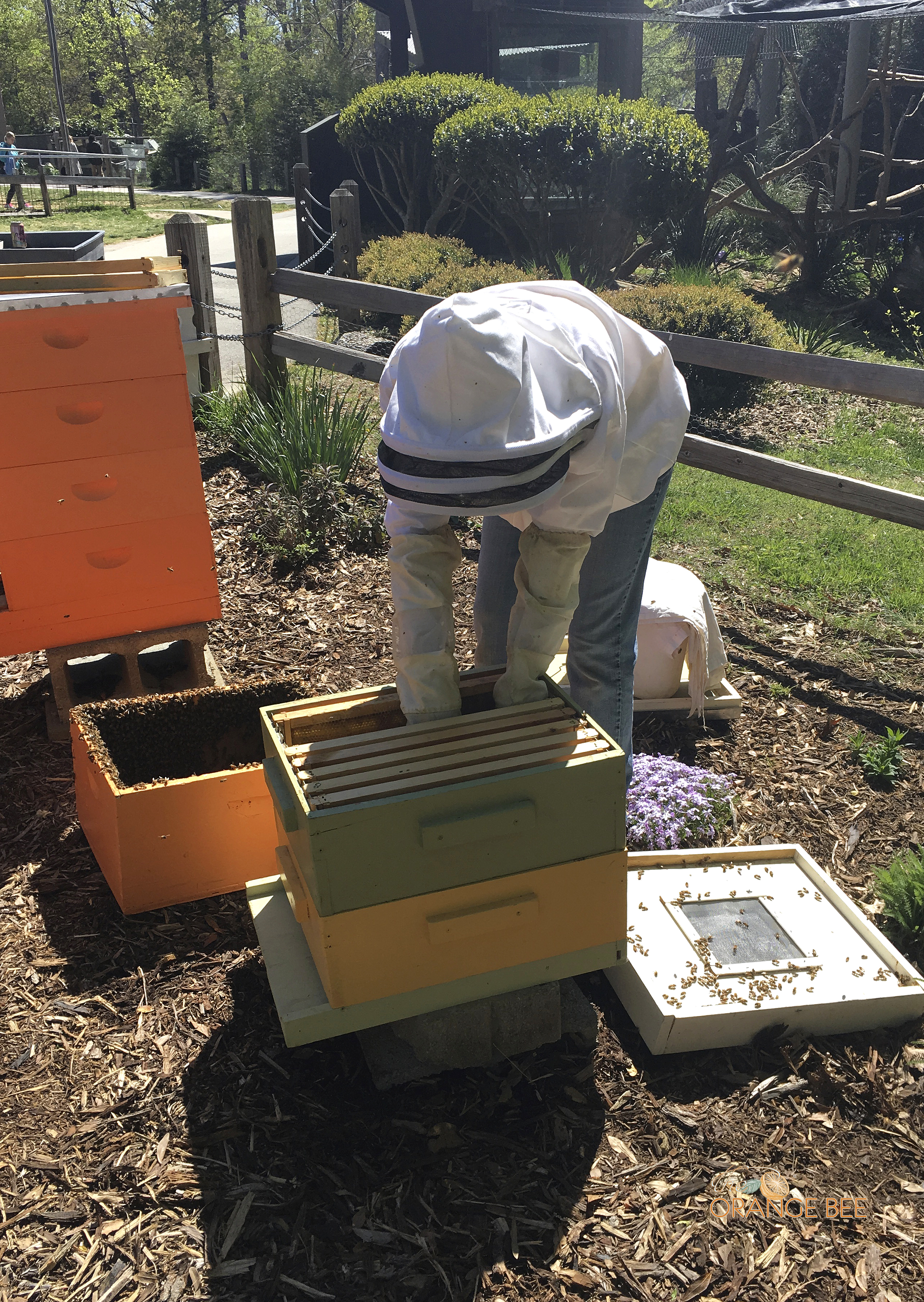
Placing the queen catcher inside the hive.
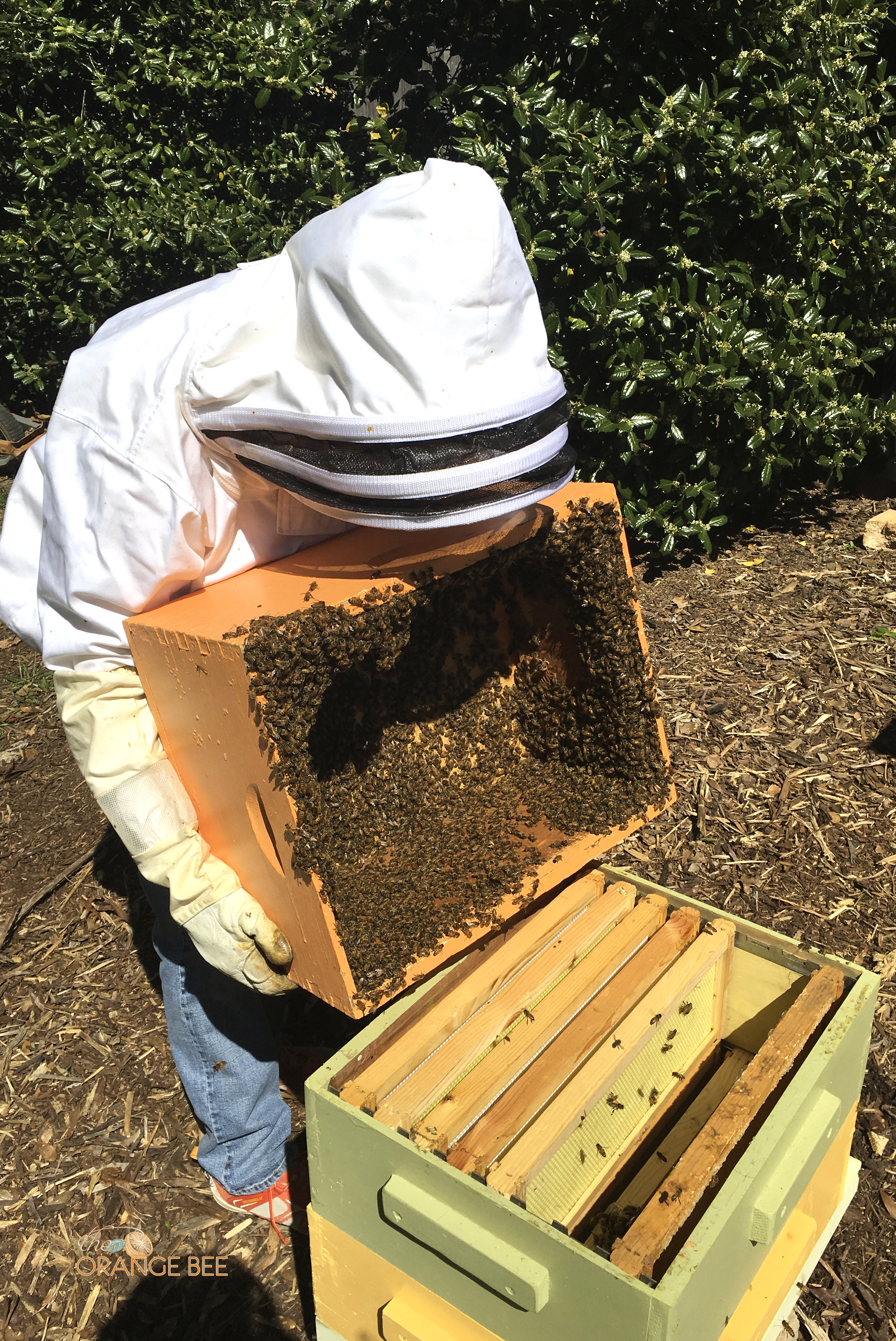
Ready to pour the workers into their new home.
Again the worker bees are happy to go inside the hive because they smell the queen’s pheromones and know this is where they belong. After getting most all the bees into the new hive I again place the lid on leaving a small gap and stand back and watch as they ones still flying around make their way into their new home.
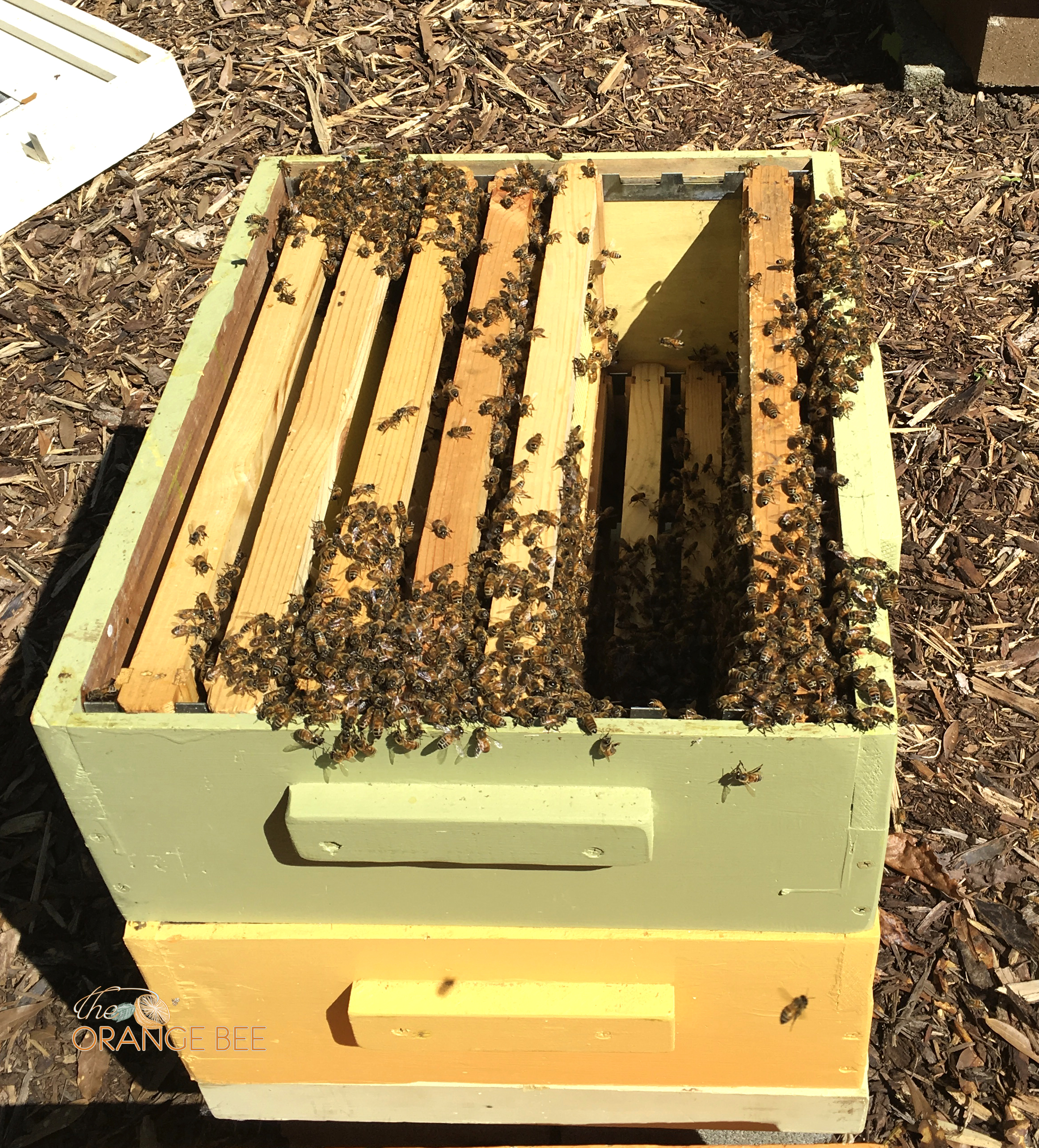
Bees are gathering inside their new hive.
After completing this part of the recovery I closed up the hive, placed a jar of sugar syrup at the entrance and left them until the next day. Around mid-morning the next day I returned to set the queen free. I smoked just a little, opened the lid and checked to be sure the queen was still alive and in her catcher. Indeed she was! I place my hand down inside the hive and slowly open the catcher, watching her walk out amongst her loyal followers. Then I replace the two frames that were removed to make room for the catcher overnight, replace the lid and smile. Successful recoveries are gratifying. Another colony of bees saved!

Queen April Hive
They had taken all of the syrup I’d given them the day before and were already beginning to familiarize themselves with their home. Queen April and her colony of honey bees are thriving. They have already grown by one more story. Upon last inspection I saw brood and nectar in the frames. Just as it should be!
Remember bees pollinate a major portion of fruits and vegetables we all like to eat. Do your part – plants flowers and trees that bees frequent, don’t use pesticides, purchase your plants from a reputable nursery with pesticide free choices. I’ll continue to do my best to spread the word to all the visitors at the science center and be a good steward of the Greensboro Science Center Bee Hives!

Great “play-by-play” of capturing a swarm. Thanks for showing it.
Thank you – they are doing very well and the hive is growing by leaps and bounds!
Such an interesting post, nice to know “bees are not aggressive when in “swarm” mode” because I think I’d freak out if I saw all those bees on that fence. Wishing you a Happy Mother’s Day.
Karen – not unlike many people – but they really are calm little creatures unless threatened or aggravated. If you ever see a swarm call your local beekeeper to remove them – NOT an exterminator! I’m sure you know that!